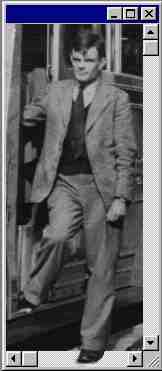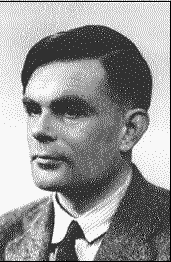Who was Alan Turing?
Founder of computer science, mathematician, philosopher,
codebreaker, strange visionary and a gay man before his
time: |
1912 (23 June): Birth, Paddington,
London
1926-31: Sherborne
School
1930: Death of friend
Christopher Morcom
1931-34:
Undergraduate at King's College, Cambridge
University
1932-35: Quantum mechanics, probability,
logic
1935: Elected fellow of King's College,
Cambridge
1936: The Turing
machine, computability, universal
machine
1936-38:
Princeton University. Ph.D. Logic, algebra, number
theory
1938-39: Return to Cambridge. Introduced to German
Enigma cipher machine
1939-40:
The Bombe, machine for Enigma decryption
1939-42: Breaking of U-boat Enigma, saving
battle of the Atlantic
1943-45: Chief Anglo-American crypto
consultant. Electronic work.
1945: National Physical
Laboratory, London
1946:
Computer and software design leading the
world.
1947-48: Programming,
neural nets, and artificial intelligence
1948: Manchester
University
1949: First serious mathematical use of a
computer
1950: The Turing Test
for machine intelligence
1951:
Elected FRS. Non-linear theory of biological growth
1952: Arrested as a homosexual, loss of security
clearance
1953-54: Unfinished work in biology and
physics
1954 (7 June): Death (suicide)
by cyanide poisoning, Wilmslow, Cheshire. |

Alan Turing in 1946.
Full
picture | |

